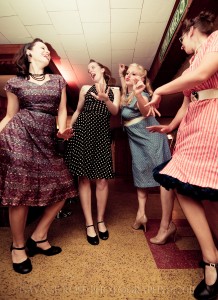by Lauren Warnecke

Perhaps one of the biggest barriers that “normal people” express about going to see modern dance is that they don’t understand it. At nearly every post-show talk-back I’ve ever attended there are at least one or two people who start their comment with, “Now, I don’t know anything about modern dance, but…..” yada yada, you fill in the blank. The standard issue response that I tend to hear is “you don’t have to understand it,” or “whatever you FEEL it’s about, IS what it’s about.”
That is completely true, and something I’ve said myself on numerous occasions. But over the past few months I’ve been formulating a theory that it’s not a particularly useful response. In other words, I’m thinking that “come to this weird thing you don’t have to understand” isn’t as effective a tagline as we’d like to think it is to getting butts in seats. After all, we are all human. We crave compelling stories and generally tend to try to apply meaning to things. Dance, however, often lives in a world of abstraction where the layers of meaning are imbedded in movements and gestures that don’t obviously reveal their stories. That’s what program notes are for…
The problem is, sometimes we (the choreographers) are so lost in the tangled web of ideas and abstraction that we too can’t exactly articulate what our pieces are about. When I gaze into a set of program notes and read that the dance I’m about to see is about a girl’s fiancé breaking their engagement, or satanic cults, or gender identity, I get a little overwhelmed.* Seeing a dance concert should be a relaxing and enjoyable experience that is accessible to everyone, and satanic cults are something I don’t often feel like dealing with on a Friday night. It’s not that these topics aren’t important and can’t or shouldn’t be explored through dance; it’s just that maybe you can find another way to express your idea by pairing it with something a little easier to swallow. Either way, heavy topics often become so abstracted by the time they reach the stage that you might as well say that the piece is about puppies, because the untrained eye won’t really see the difference anyway. No matter the subject, we come up with quips and phrases for press releases and program notes that say sort of what we think our piece is about, but most program notes could really just say “this piece is about whatever you feel it’s about and you don’t have to understand it” (read: “I’m not so sure what it’s about either…”). [Read more…]





